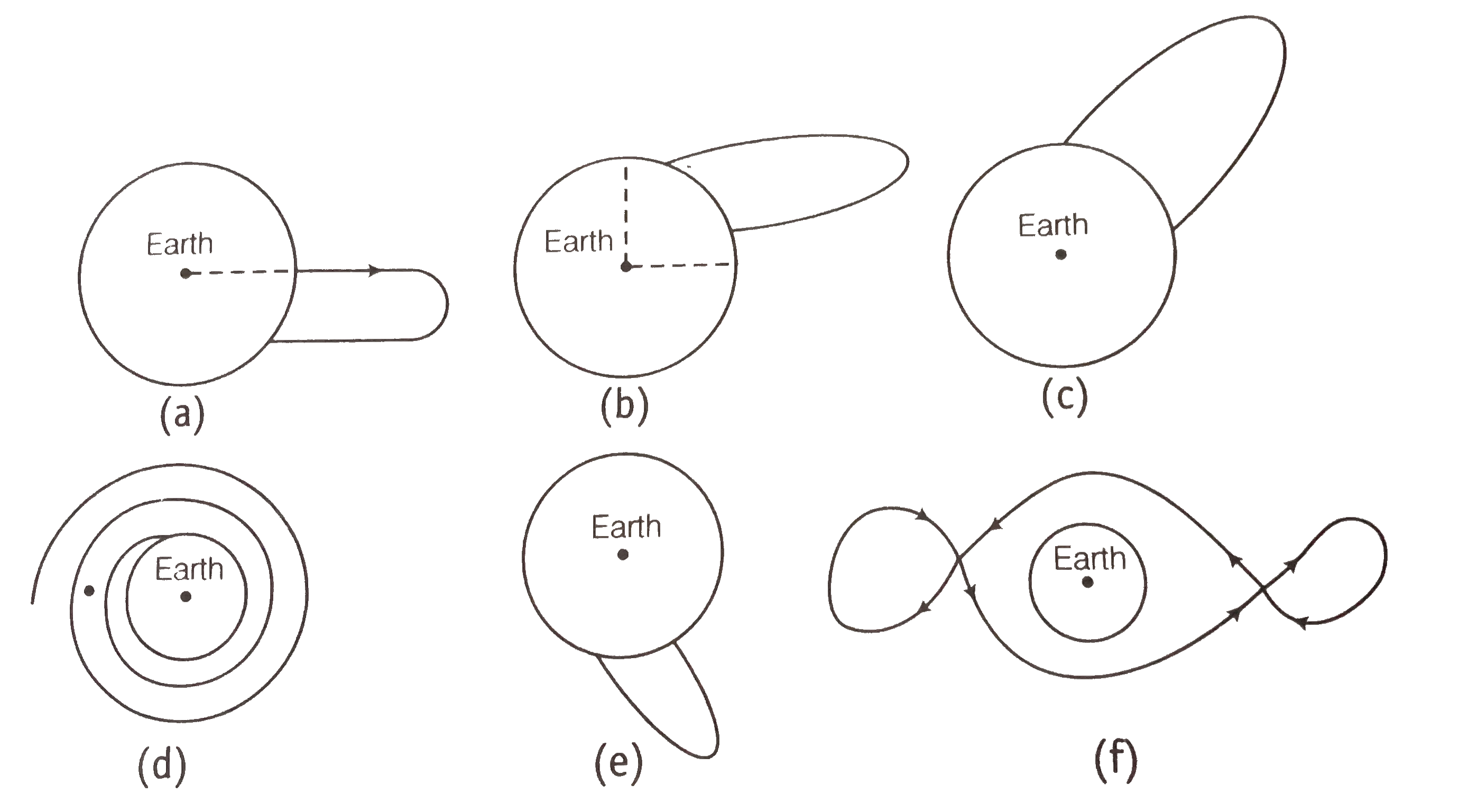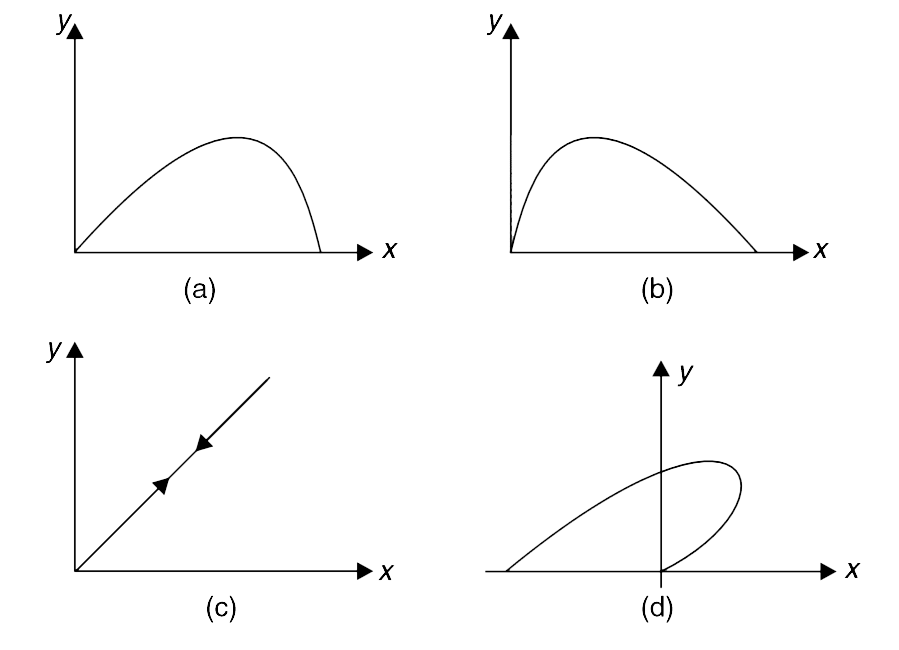Shown are several curves. Explain with reason, which ones amongst them can be possible trajectories traced by a projectile (neglect air friction).

The trajectory of a particle under gravitational force of the earth will be a conic section (for motion outside the earth) with the centre of the eacrth as a focus. Only (c ) meets this requirement.
Topper's Solved these Questions
- GRAVITATIONBOOK - MODERN PUBLICATIONCHAPTER - GRAVITATIONEXERCISE - Higher Order Thinking Skills & Advanced Level
15 Videos
- GRAVITATIONBOOK - MODERN PUBLICATIONCHAPTER - GRAVITATIONEXERCISE - Revision Exercises (very short answer questions)
30 Videos
- GRAVITATIONBOOK - MODERN PUBLICATIONCHAPTER - GRAVITATIONEXERCISE - NCERT FILE (Additional Exercises)
4 Videos
- MATHEMATICAL TOOLSBOOK - MODERN PUBLICATIONCHAPTER - MATHEMATICAL TOOLSEXERCISE - PRACTICE PROBLEMS (10)
12 Videos
Similar Questions
Shown are several cuves (fig. (a), (b), (c), (d), (e), (f)]. Explain with reason, which ones amongst them can be possible trajectories traced by a projectile (neglect air friction).

View SolutionShown are several cuves (fig. (a), (b), (c), (d), (e), (f)]. Explain with reason, which ones amongst them can be possible trajectories traced by a projectile (neglect air friction).

View Solution
Knowledge Check
Which one of the following can reduce air friction?
AGrooves on the tyre of car.BStreamline shape of aeroplane.COily surface of the floor.DAll of these.Assertion: Three projectiles are moving in different paths in the air. Vertical component of relative velocity between any of the pair does not change with time as long as they are in air. Neglect the effect of air friction.
Reason: Relative acceleration between any of the pair of projectile is zero.AIf both assertion and reason are true and reason is the correct explanation of assertion.BIf both assertion and reason are true but reason is not the correct explanation of assertion.CIf assertion is true but reason is false.DIf assersion is false but reason is true.Assertion In projectile motion, the angle between instanteneous velocity vector and acceleration vector can be anything between o to π (excluding the limiting case)
Reason In projectile motion, acceleration vector is always pointing vertically downwards. (Neglect air friction.)AIf both Asseration and Reason are correct and Reason is the correct explanation of AssertionBIf both Assertion and Reason are correct but Reason is not the correct explanation of AssertionCIf Assertion is true but Reason is falseDIf Assertion is false but Reason is true
Shown are several cuves (fig. (a), (b), (c), (d), (e), (f)]. Explain with reason, which ones amongst them can be possible trajectories traced by a projectile (neglect air friction).

View SolutionExplain with reasons which of the following gaphs can possibly represent the motion of a particle observed in nature ?

View SolutionA ball is projected in vertical x–y plane from a car moving along horizontal x direction. The car is speeding up with constant acceleration. Which one of the following trajectory of the ball is not possible in the reference frame attached to the car? Give reason for your answer. Explain the condition in which other trajectories are possible. Consider origin at the point of projection.

View SolutionStatement-1 : A man projects a stone with speed u at some angle. He again projects a stone with same speed such that time of flight now is different. The horizontal ranges in both the cases may be same. (Neglect air friction) Statement-2 : The horizontal range is same for two projectiles projected with same speed if one is projected at an angle q with the horizontal and other is projected at an angle(90∘θ)with the horizontal. (Neglect air friction)
View SolutionA block of mass m is placed behind in contact with vertical side of M as shown in the figure. The coefficient of static friction between m and M in μ. The least horizontal force with which m can be pushed so that the two blocks move together is (neglect friction between M and ground).
View Solution
